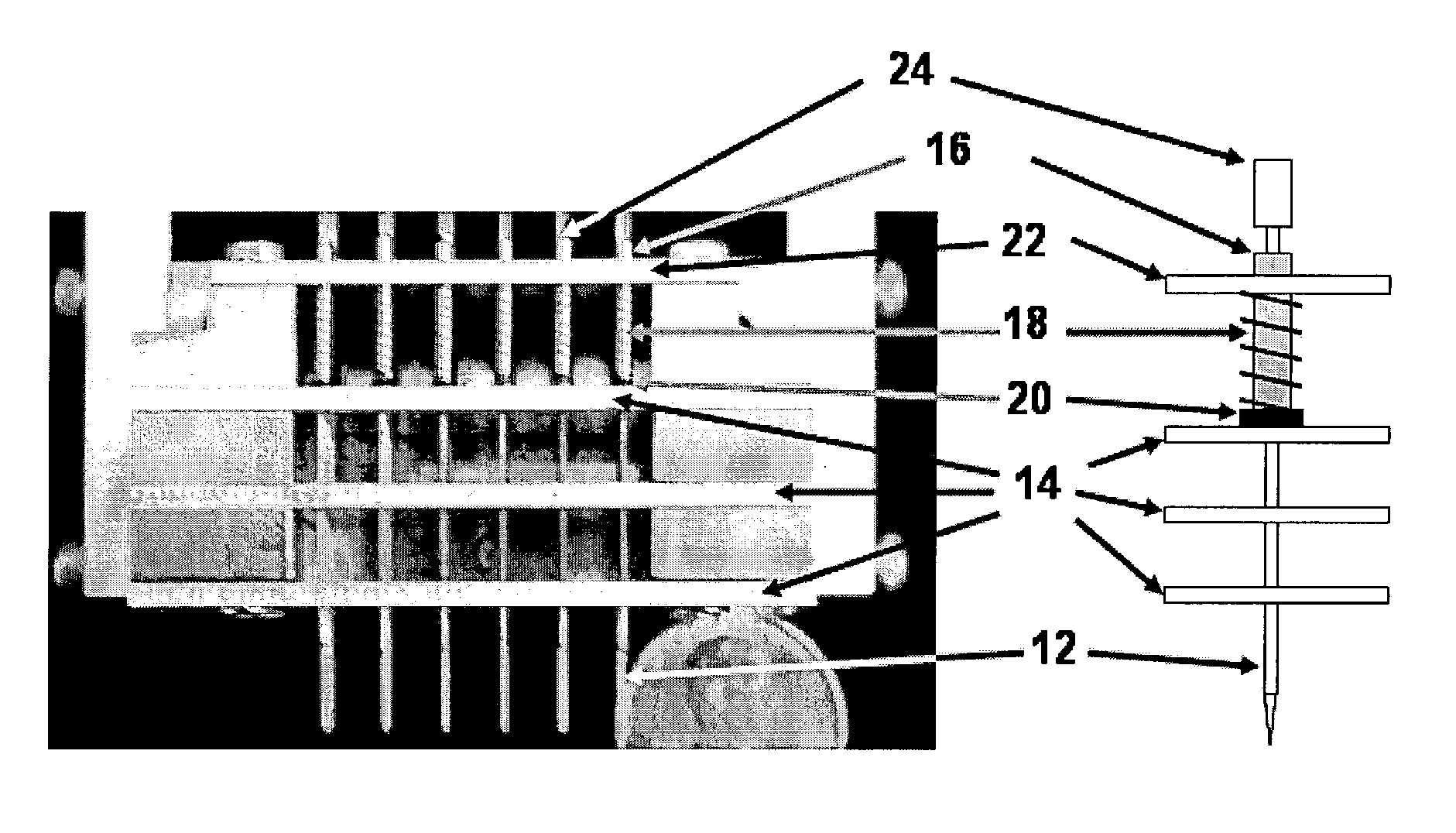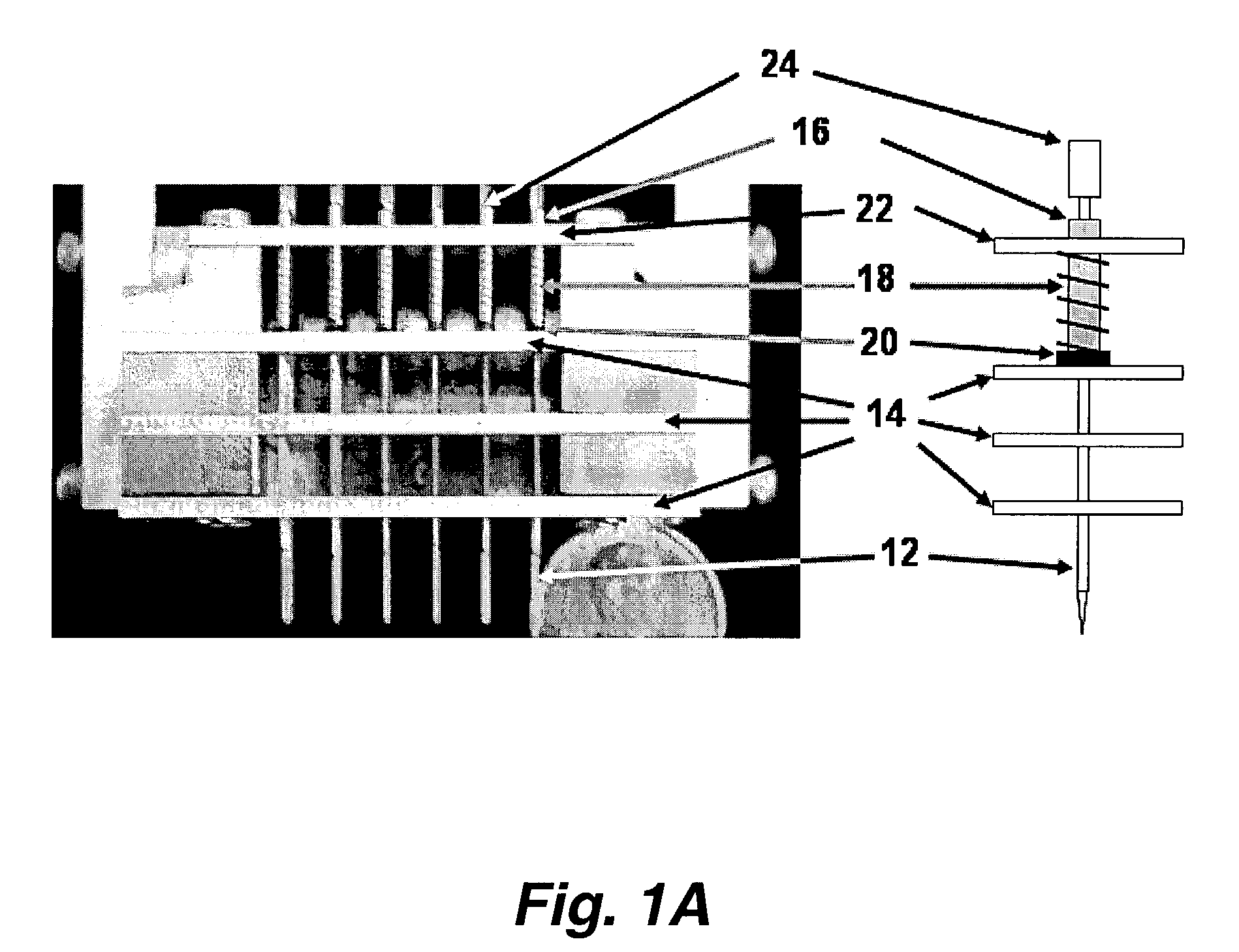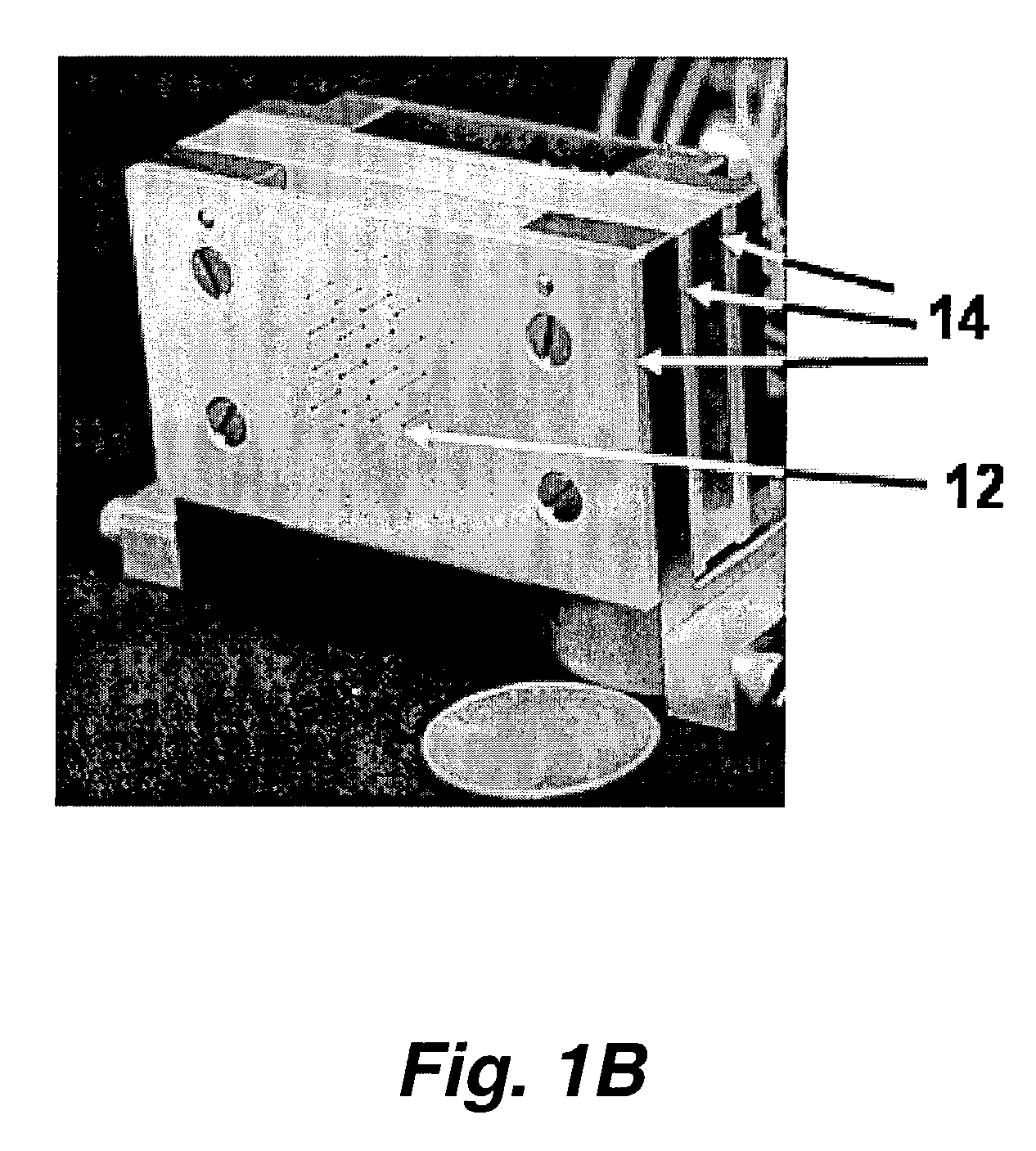Capillary pins for high-efficiency microarray printing device
a printing device and high-efficiency technology, applied in the field of high-efficiency microarray production, can solve the problems of the efficiency of each synthetic step affecting the quality and integrity of the molecules forming the array, and the inability to accurately identify the sequence, etc., to achieve the effect of improving the use of reagents and small feature size and spacing
- Summary
- Abstract
- Description
- Claims
- Application Information
AI Technical Summary
Benefits of technology
Problems solved by technology
Method used
Image
Examples
Embodiment Construction
[0043]This invention pertains to a microarray printer that can be used to manufacture microarrays (e.g. of biochemical samples) by direct contact printing. The array printer of this invention is capable of printing microarrays at higher feature density, with greater speed and lower cost than previous microarray printing devices.
[0044]Without being bound to a particular theory, these efficiencies are achieved by the use of a combination of novel features. A novel printing pin permits vastly more efficient reagent usage and a greater number features to be printed per load. This reduces reagent costs, and because the pin does not require repeated refills during the printing process, the printing operation proceeds more rapidly.
[0045]In addition, positive control of reagent flow using pressure and vacuum, also improves reagent capture and delivery and reduces the incidents of mis-prints due to pin blockage during loads or print steps. In addition, positive pressure control keeps the liq...
PUM
| Property | Measurement | Unit |
|---|---|---|
| internal diameter | aaaaa | aaaaa |
| diameter | aaaaa | aaaaa |
| volume | aaaaa | aaaaa |
Abstract
Description
Claims
Application Information
 Login to View More
Login to View More - R&D
- Intellectual Property
- Life Sciences
- Materials
- Tech Scout
- Unparalleled Data Quality
- Higher Quality Content
- 60% Fewer Hallucinations
Browse by: Latest US Patents, China's latest patents, Technical Efficacy Thesaurus, Application Domain, Technology Topic, Popular Technical Reports.
© 2025 PatSnap. All rights reserved.Legal|Privacy policy|Modern Slavery Act Transparency Statement|Sitemap|About US| Contact US: help@patsnap.com



